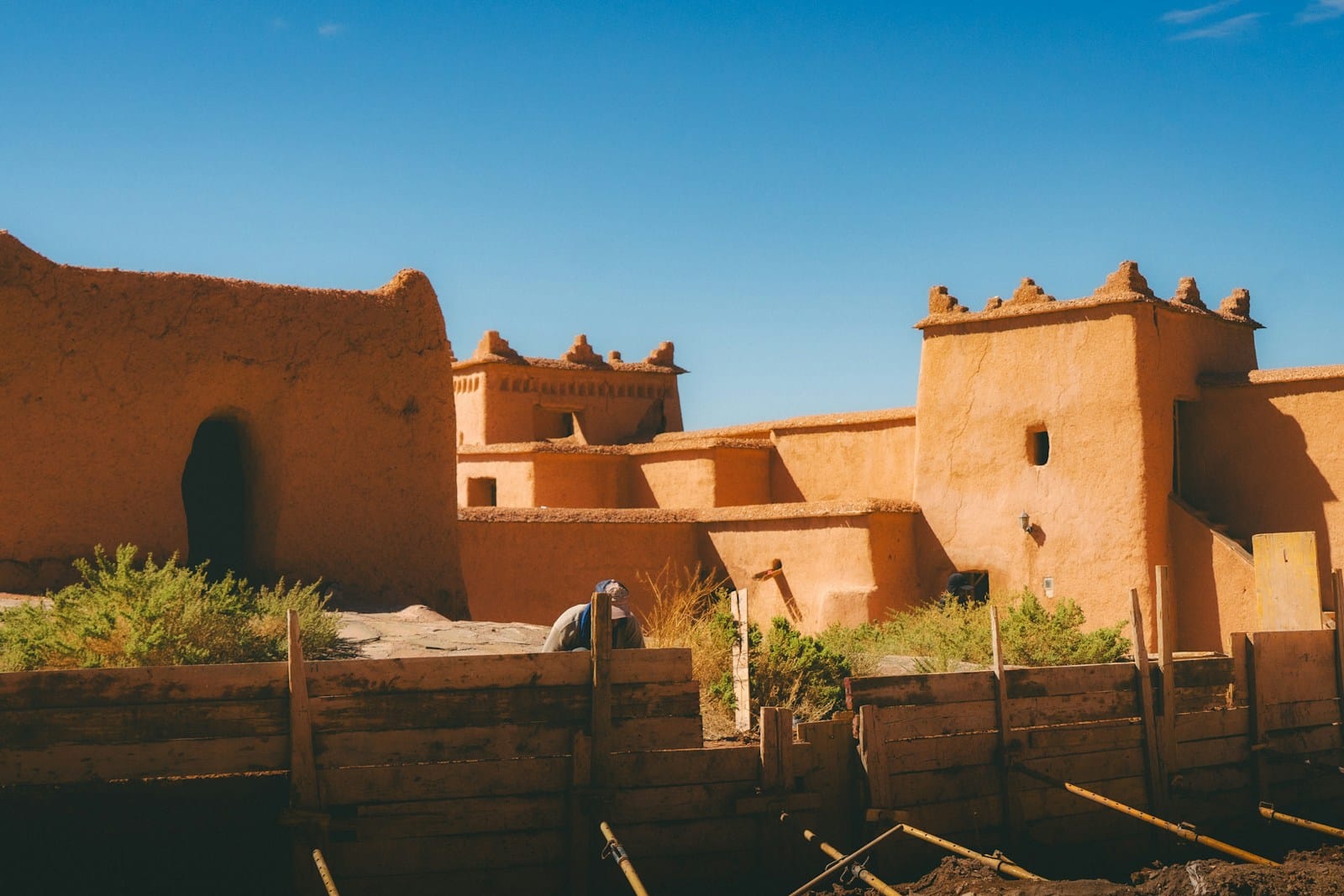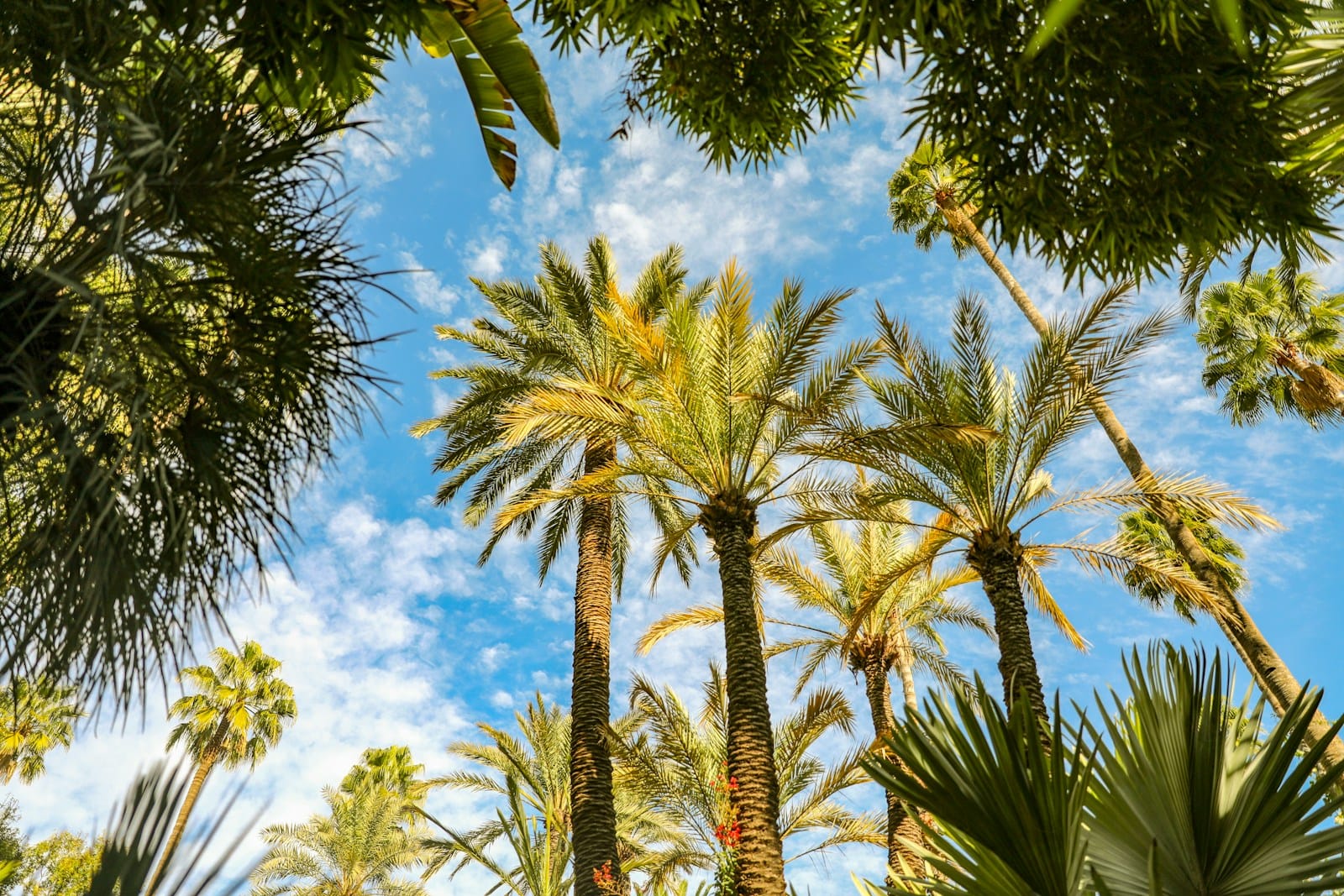Where and What to Eat in Morocco – A Food Journey Through Flavor and Culture
A Flavorful Journey: What to Eat in Morocco
Where and What to Eat in Morocco – A Food Journey Through Flavor and Culture
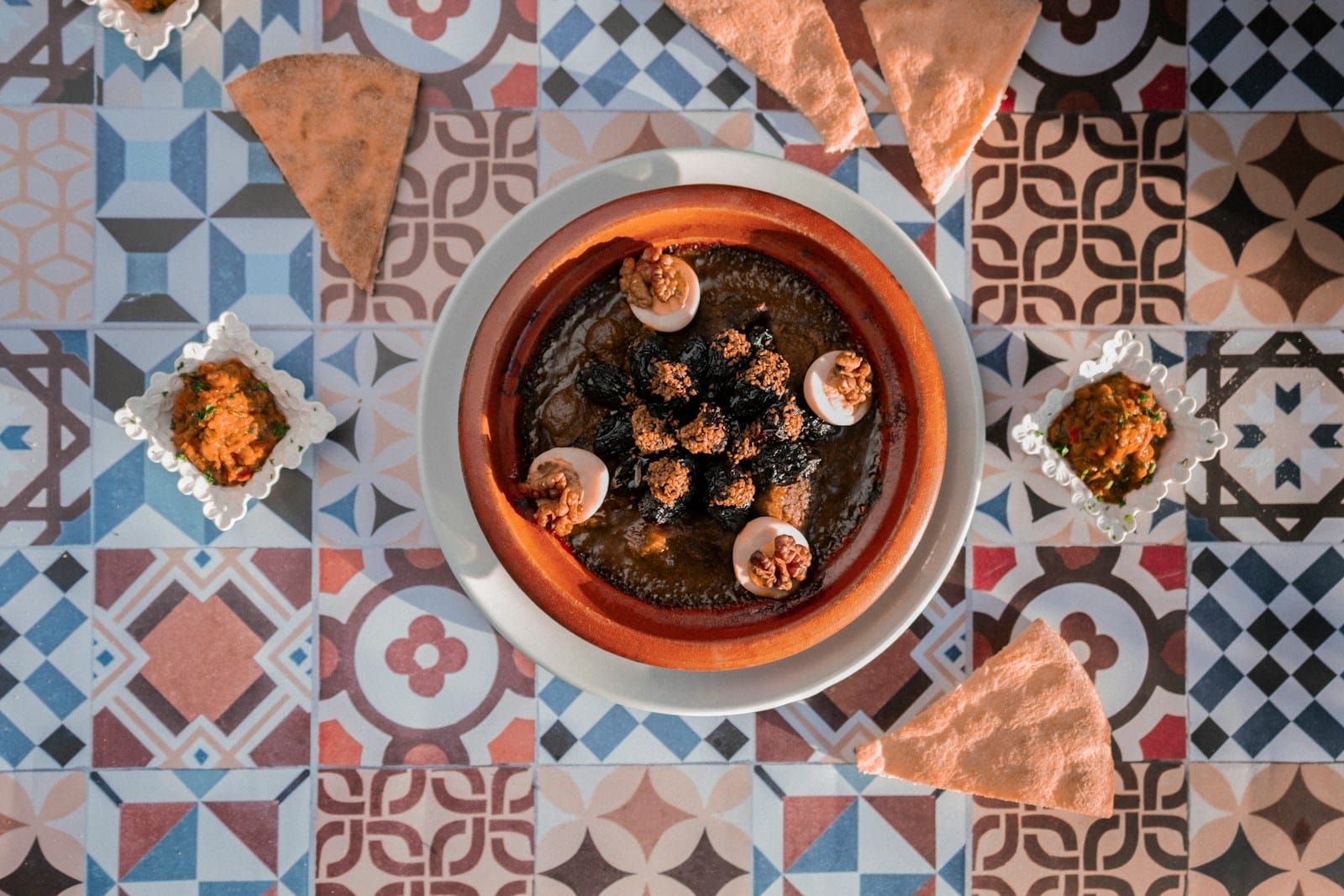
The first scent that greeted me as I stepped into the labyrinthine streets of Marrakech’s medina wasn’t the leather from the tanneries or the perfume from the spice markets it was the irresistible aroma of slow-cooked tagine wafting from tiny restaurants tucked between ancient walls. My quest to discover where and what to eat in Morocco had officially begun, and my senses were already overwhelmed. This vibrant North African country offers a culinary adventure unlike any other, where sweet meets savory and centuries-old recipes are still prepared in traditional clay pots over open flames. Prepare for a sensory journey that will transform how you think about food forever.
Throughout my three-week journey across Morocco, from coastal Essaouira to the Sahara’s edge, I documented every memorable bite, every hidden gem restaurant, and every food revelation that made me stop mid-chew and marvel. This guide to where and what to eat in Morocco combines my personal experiences with insights from local chefs and food vendors who generously shared their culinary secrets.
Discovering Morocco’s Food Soul
Moroccan cuisine is a beautiful reflection of the country’s complex history, where Berber, Arabic, Andalusian, and French influences blend into something entirely unique. The heart of this culinary tradition lies in its spices not necessarily for heat, but for depth of flavor. Cinnamon, cumin, saffron, ginger, and paprika form the backbone of many dishes, creating layers of taste that develop slowly through patient cooking methods. For anyone wondering where and what to eat in Morocco, understanding these spice combinations is the first step toward a truly immersive experience.
Perhaps nothing symbolizes Moroccan hospitality better than the ritual of mint tea. Served throughout the day in delicate glass cups, this sweet infusion of green tea and fresh mint leaves is poured from ornate silver teapots held high above the cups – creating a show of bubbles and aeration that enhances the flavor. When offered tea in Morocco, know that you’re being welcomed not just as a visitor, but as an honored guest. Exploring the local cafés and tea houses is an essential part of discovering where and what to eat in Morocco, and it’s a tradition that brings communities together.
Every meal in Morocco tells a story, so paying attention to ingredients, presentation, and context helps you uncover the secrets of where and what to eat in Morocco while connecting deeply with the culture and people.
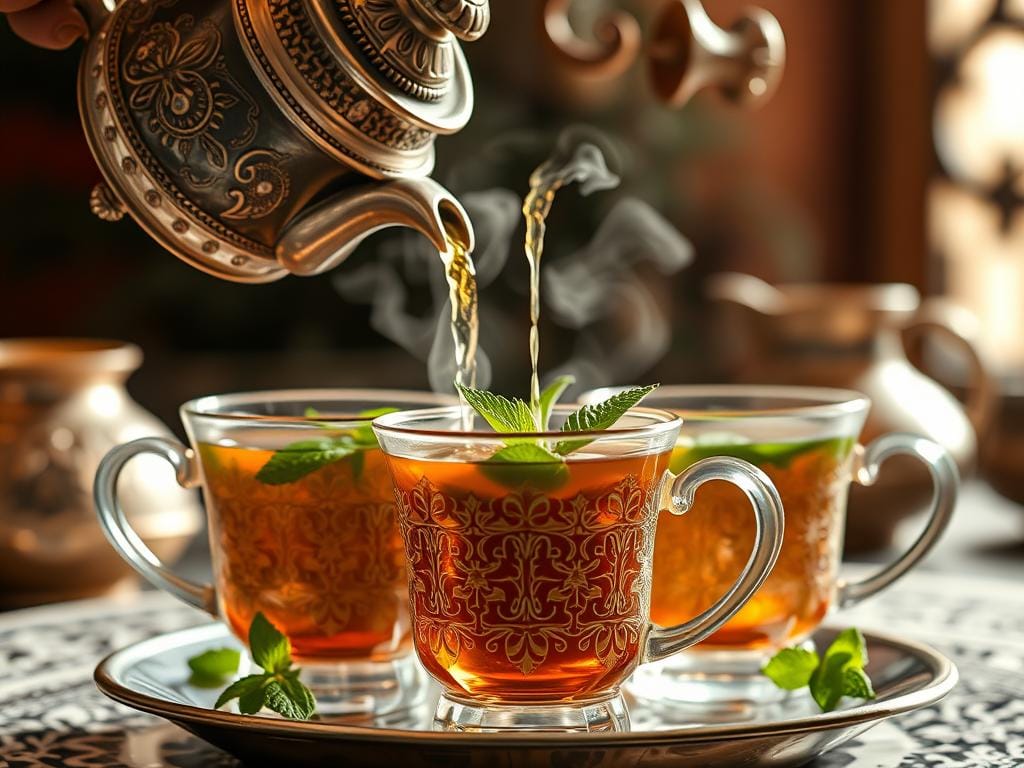
Ready to Start Your Morocco Journey?
Book your trip today with our expert planners, enjoy personalized itineraries tailored to your flights and travel needs, and claim 30% off as a first-time visitor!
Meals in Morocco are communal affairs, often eaten from shared plates with bread as the primary utensil. This style of dining creates an immediate sense of connection something I experienced firsthand when invited to a family dinner in Fez. We gathered around a low table, washing hands before the meal, then using pieces of fresh khobz (Moroccan bread) to scoop up fragrant tagine. “Food tastes better when shared,” my host explained, a philosophy that seems to permeate every aspect of Moroccan dining. This is a perfect example of where and what to eat in Morocco.
Tasting the Classics: Must-Try Moroccan Dishes
No exploration of where and what to eat in Morocco would be complete without diving into the country’s iconic dishes. These staples appear on menus throughout the country, though regional variations offer delightful surprises for the curious traveler.
Tagine: The Heart of Moroccan Cooking
Named after the distinctive conical clay pot in which it’s cooked, tagine is both a cooking vessel and the slow-cooked stew prepared within it. The genius of the tagine pot lies in its design – the cone-shaped lid traps steam, which condenses and falls back onto the ingredients, creating incredibly tender meat and vegetables infused with complex flavors.

In Marrakech, I discovered my favorite variation a lamb tagine with prunes and almonds that balanced savory depth with subtle sweetness. In coastal regions, fish tagines incorporate the day’s catch with chermoula, a vibrant herb and spice marinade. Vegetarians will delight in the seven-vegetable tagine, a colorful medley of seasonal produce slow-cooked to perfection.
Couscous: Friday's Sacred Dish
Forget the instant couscous you may have tried at home authentic Moroccan couscous is a revelation. These tiny semolina granules are steamed multiple times over a flavorful broth, resulting in a light, fluffy texture that bears little resemblance to quick-cooking versions. Experiencing this firsthand is a highlight of where and what to eat in Morocco.
Traditionally served on Fridays (the holy day in Islam), couscous is topped with tender vegetables and meat that have been simmering for hours. The preparation is labor-intensive, which explains why many restaurants only offer it on specific days. When a Moroccan grandmother in Essaouira invited me to help prepare Friday couscous, I gained new appreciation for this dish as she patiently demonstrated how to separate and steam the grains by hand another unforgettable moment in discovering where and what to eat in Morocco.
Pastilla: Sweet and Savory Perfection
Perhaps the most elegant expression of Morocco’s love for combining sweet and savory flavors is pastilla (also spelled bastilla) – a pie made of paper-thin warqa pastry filled with shredded meat (traditionally pigeon, now often chicken), almonds, and eggs, then dusted with cinnamon and powdered sugar.
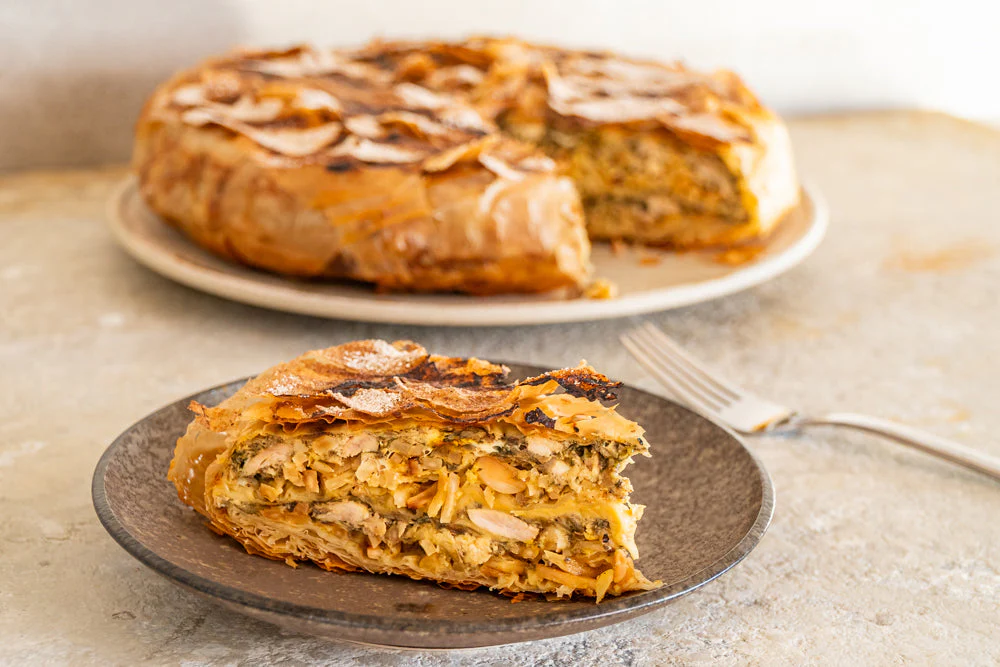
In Marrakech, I watched in awe as the waiter ceremoniously cut open a pastilla, releasing a cloud of aromatic steam. The contrast between the crisp pastry, tender spiced meat, and sweet topping creates a memorable flavor experience that exemplifies Morocco’s sophisticated approach to balancing tastes and textures.
Street Food Adventures
Some of my most memorable food experiences in Morocco happened not in restaurants, but in the bustling markets and street food stalls where locals gather. Jemaa el-Fnaa square in Marrakech transforms each evening into an open-air food court, with dozens of vendors setting up stalls numbered for easy navigation.
Here’s what not to miss on the Moroccan street food scene:
Harira: Morocco's Beloved Soup
This hearty tomato-based soup filled with lentils, chickpeas, herbs, and sometimes meat becomes especially popular during Ramadan, when it’s traditionally used to break the fast. Served with a wedge of lemon and often accompanied by dates or chebakia (honey-soaked pastries), harira offers warming comfort in a bowl.
I found the best harira from a tiny stall in Fez’s medina, where a woman had been making the same recipe for decades. The rich, aromatic broth had developed such complexity that I returned three days in a row, each time joining the line of locals who clearly knew they’d found perfection.
Snail Soup (Babbouche)
For the adventurous eater, snail soup offers a uniquely Moroccan experience. Small snails are slow-cooked in a broth flavored with over ten spices, creating a fragrant, slightly medicinal brew that locals prize for its health benefits. You’ll spot vendors with large pots of bubbling snail soup, serving it in small bowls with toothpicks for extracting the snails.
When I tried this delicacy in Marrakech, the vendor showed me how to sip the broth first, then use a toothpick to pull the tender snails from their shells. The flavor was surprisingly mild and herbal nothing like the garlic-butter French preparation.
Freshly Squeezed Juices
Morocco’s abundant citrus groves mean fresh orange juice is available year-round for astonishingly low prices. In any market, you’ll find juice vendors with pyramids of oranges, pressing them to order. Beyond orange juice, try pomegranate in season or refreshing mint-lemonade on hot days.
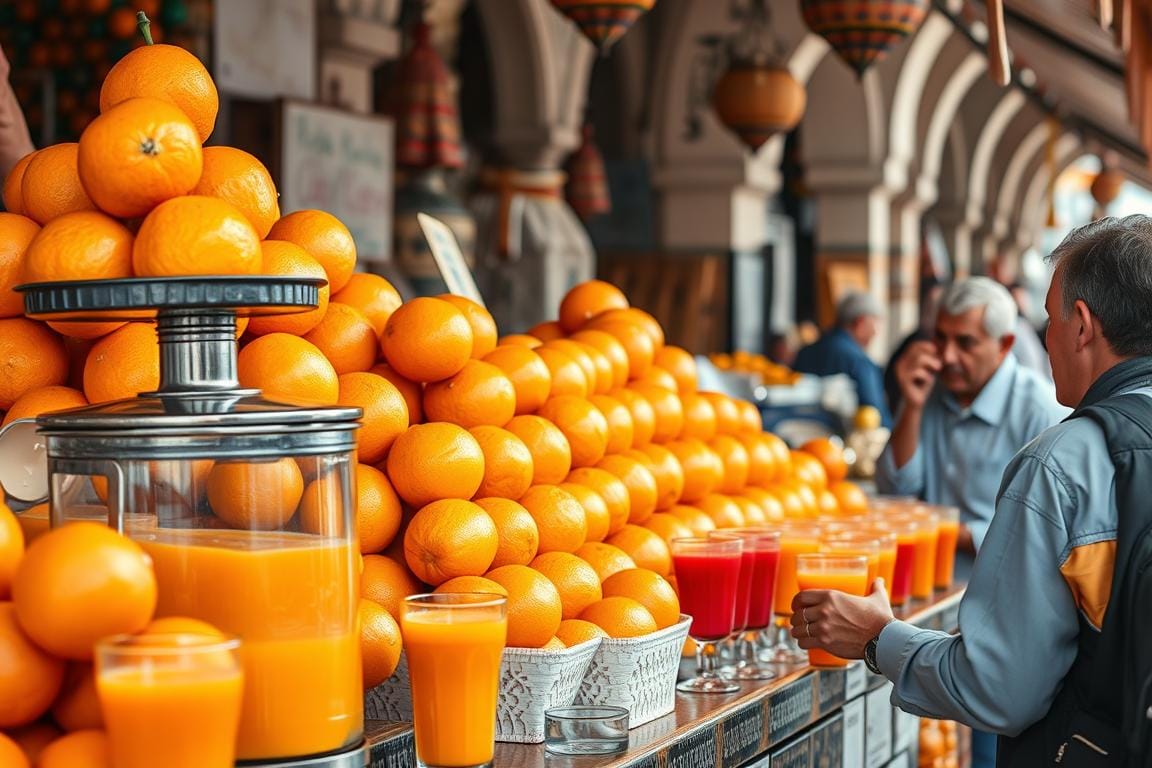
Where and What to Eat in Morocco by City
Each Moroccan city offers its own culinary specialties and dining experiences. Here’s a city-by-city guide to the best food destinations:
Marrakech: The Culinary Capital
Marrakech offers the widest range of dining options, from street food to fine dining:
- Jemaa el-Fnaa - Visit stall #14 for excellent grilled meats or #32 for seafood. Arrive around 6pm to watch the stalls set up.
- Nomad - Modern Moroccan cuisine on a rooftop terrace overlooking the spice market.
- Dar Yacout - Traditional Moroccan dining in a palatial setting with set menus featuring classic dishes.
- Café des Épices - Perfect for lunch with views over the spice market and excellent mint tea.
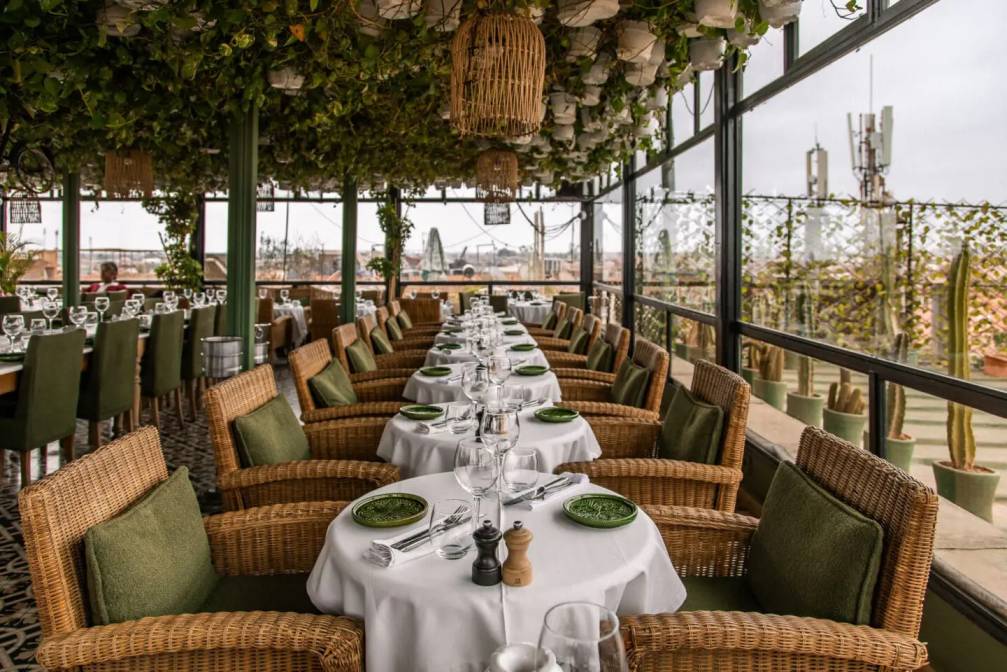
Fez: Traditional Flavors
Fez is considered by many to be Morocco’s gastronomic soul, with recipes passed down through generations:
- Café Clock - Famous for its camel burger and cooking classes.
- Restaurant Dar Hatim - Family-run establishment serving some of the best home-style Moroccan food.
- The Ruined Garden - Beautiful garden setting with a menu that changes daily based on market finds.
Essaouira: Seafood Paradise
This coastal town is all about fresh-caught seafood:
- Port fish stalls - Choose your fish and have it grilled on the spot.
- Taros - Rooftop restaurant with ocean views and excellent seafood tagine.
- La Table by Madada - Elegant seafood restaurant in a converted carob warehouse.
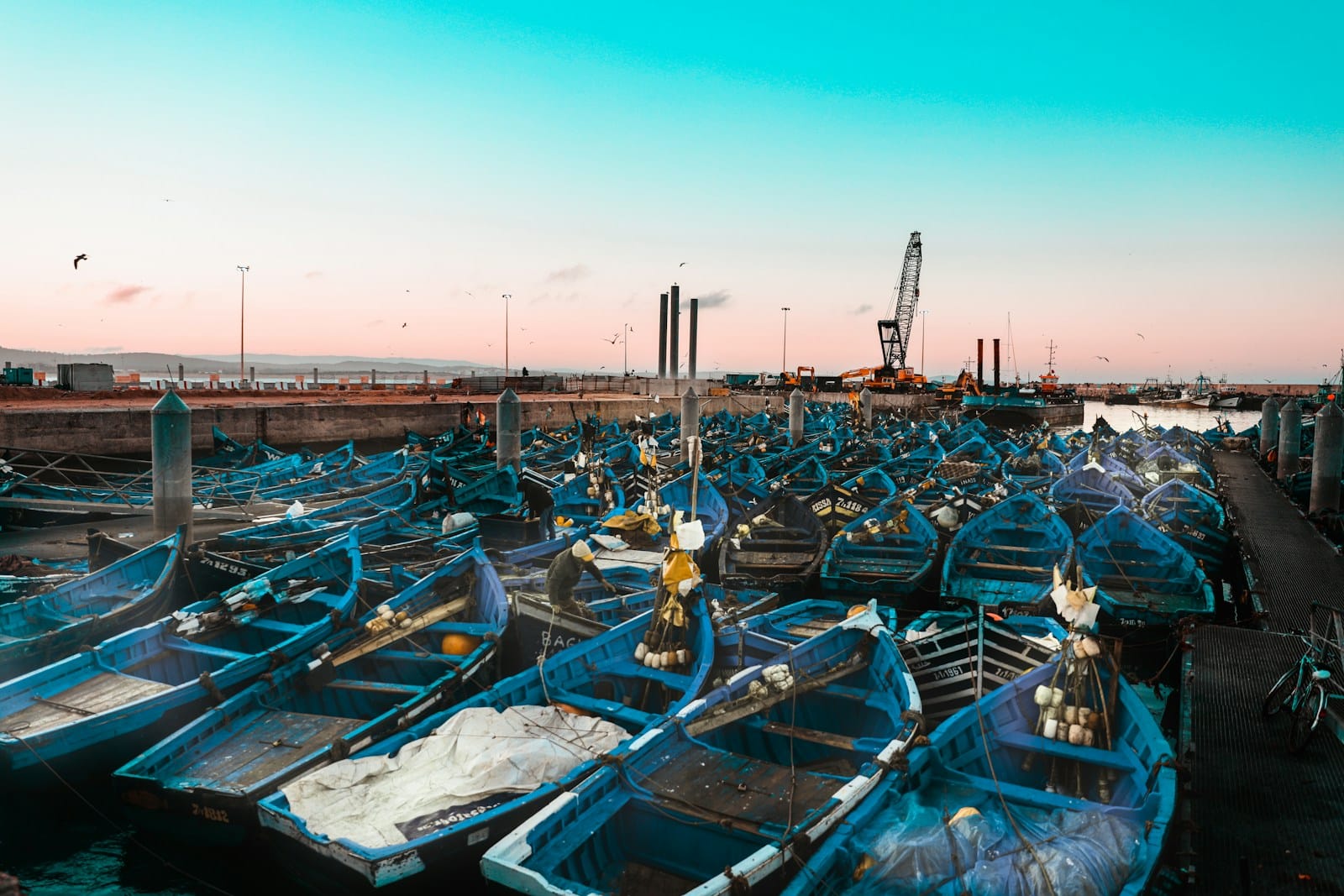
A Perfect Day of Eating in Morocco
If I could design one perfect day of eating in Morocco, here’s what it would look like:
Breakfast (8-10am)
Begin with a traditional Moroccan breakfast at a riad (traditional house). Expect fresh bread, including msemen (flaky square pancakes) and baghrir (spongy pancakes with tiny holes), served with honey, amlou (almond-argan oil spread), soft cheese, olives, and fresh orange juice. Accompany with either nous nous (half coffee, half milk) or mint tea.
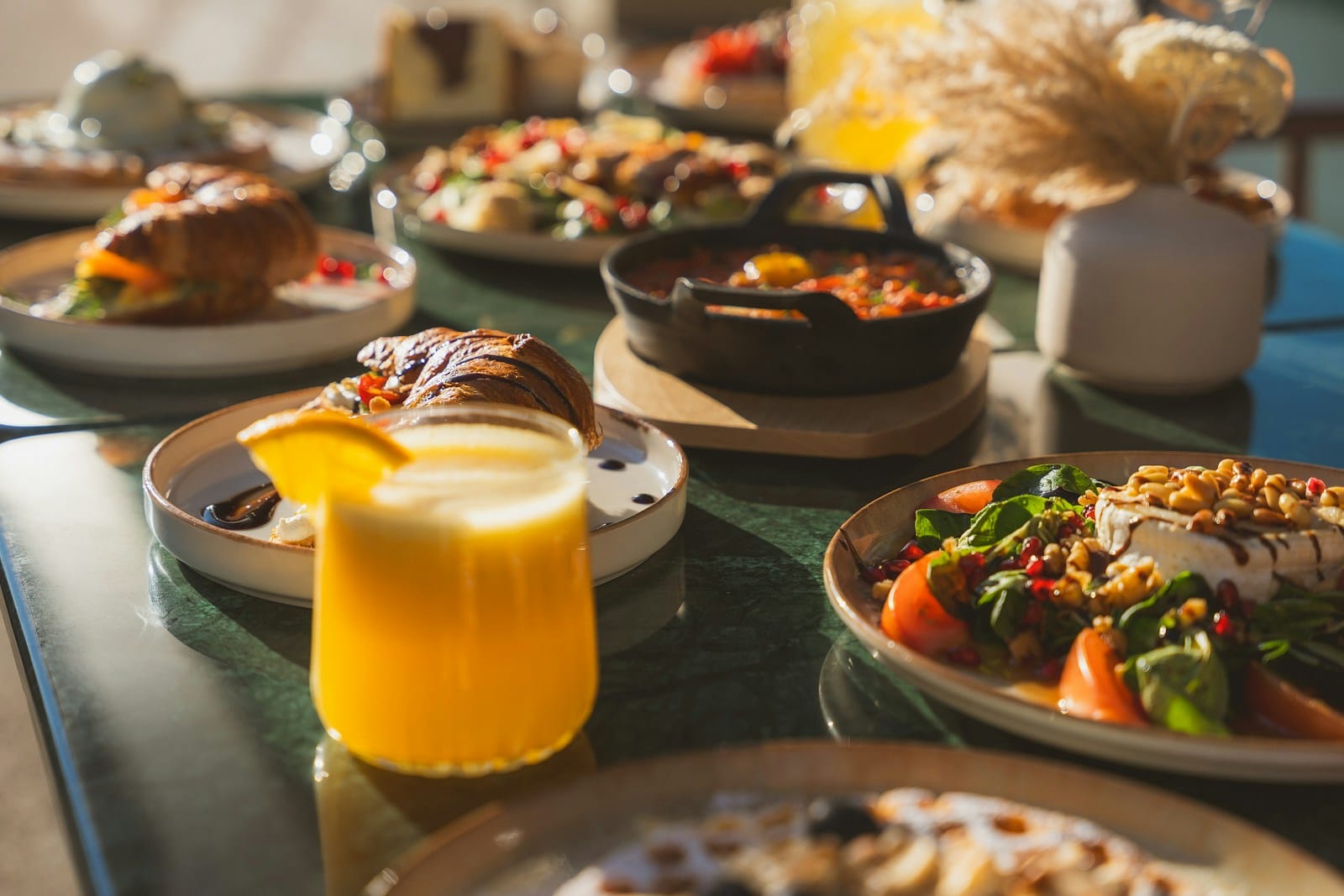
Mid-Morning Snack (11am)
Stop at a street vendor for sfenj Moroccan doughnuts fried to golden perfection and either dusted with sugar or left plain. Pair with a fresh juice from a nearby stand.
Lunch (1-3pm)
For lunch, seek out a small family-run restaurant serving a rotating menu of home-style dishes. Look for rfissa (shredded msemen topped with chicken, lentils, and fenugreek) or a seasonal vegetable tagine. Most places serve a selection of small Moroccan salads to start – these might include zaalouk (smoky eggplant), taktouka (pepper and tomato), or carrot with cumin.
Afternoon Tea (5pm)
Mint tea is served throughout the day, but the late afternoon pause for tea and sweets is particularly enjoyable. Find a café with a view and order tea with a selection of Moroccan pastries like gazelle horns (crescent-shaped almond cookies) or chebakia (sesame and honey cookies).
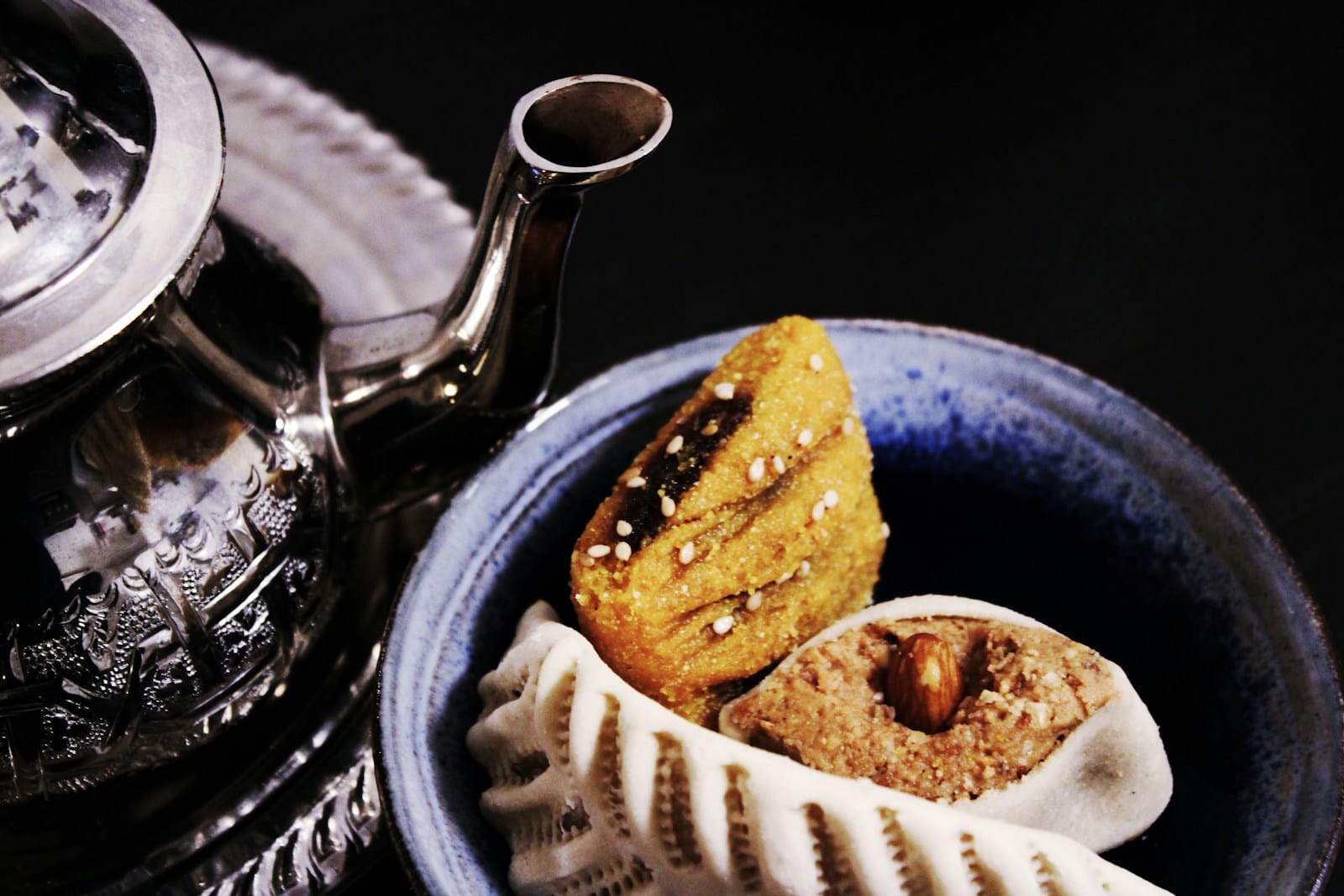
Dinner (8-10pm)
Dinner is the main meal in Morocco and often begins later in the evening. For a special experience, book at a traditional restaurant offering a multi-course meal with entertainment. Start with harira soup, followed by pastilla, then a main course of lamb or chicken tagine. Finish with fresh fruit and more sweet mint tea.
Practical Tips for Food Explorers
While exploring where and what to eat in Morocco, keep these practical tips in mind:
Food Safety
- Stick to bottled water and avoid ice in drinks unless at higher-end establishments.
- For street food, choose busy stalls with high turnover and watch food being cooked fresh.
- Peel fruits yourself rather than buying pre-cut portions.
- Carry hand sanitizer for before-meal cleansing when water isn't available.
Dining Etiquette
- Wash hands before meals – many restaurants will bring a hand-washing basin to your table.
- Eat with your right hand only when sharing communal dishes.
- It's polite to try everything offered, even if just a small amount.
- Say "bismillah" (in the name of God) before eating to show respect for local customs.
Budget Tips
- Set lunch menus offer excellent value, often including three courses for 70-120 dirhams.
- Street food is both authentic and affordable – a hearty harira soup costs around 5-10 dirhams.
- Riads often include breakfast in the room rate, and many offer dinner by arrangement.
- Fresh markets are perfect for picnic supplies – olives, bread, cheese, and fruit make an excellent lunch.
Need Help with Transportation in Morocco?
Book a reliable private driver for your Morocco family adventure today – personalized routes designed just for you, and get 30% off as a first-time visitor!
Bringing Morocco Home: Cooking Classes and Food Souvenirs
One of the best ways to extend your Moroccan food journey is by learning to cook these dishes yourself. Cooking classes are available in most major cities and typically include a market tour, hands-on cooking instruction, and a meal enjoying your creations.
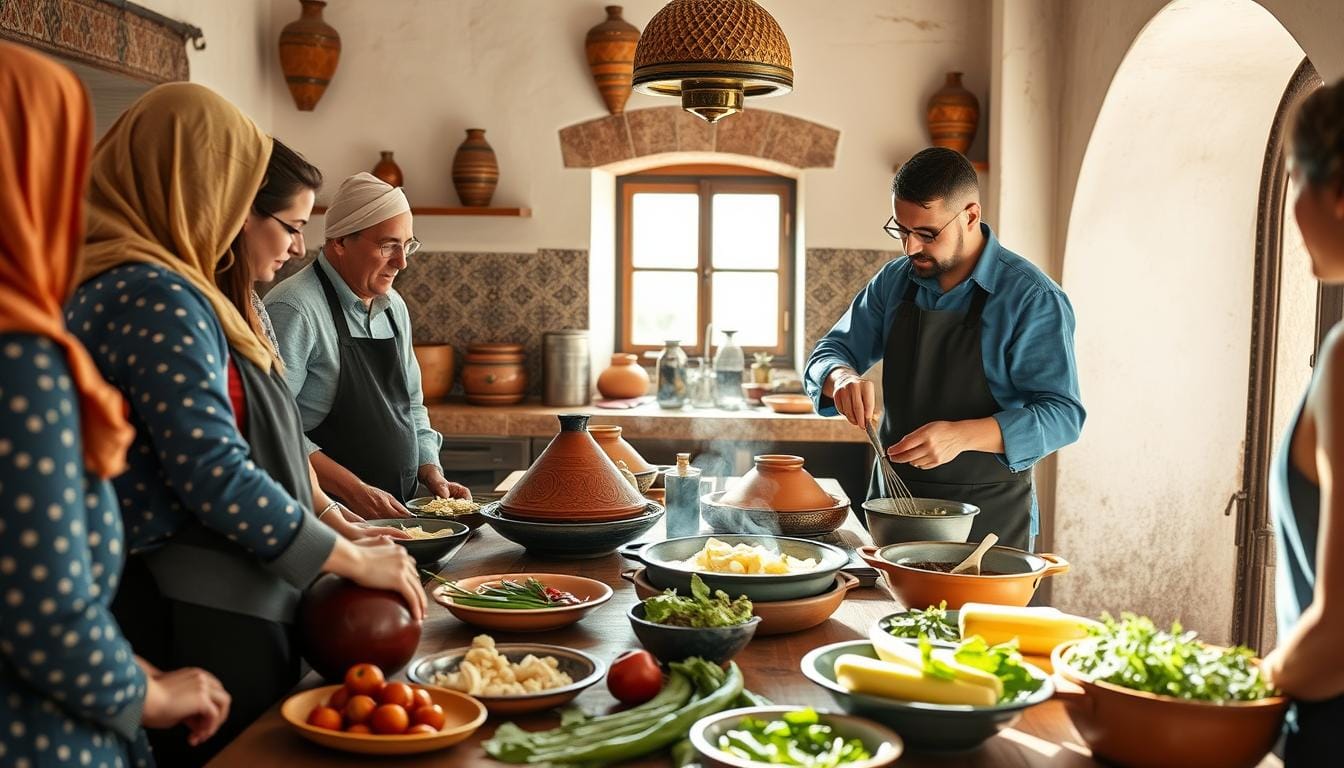
For food souvenirs to bring home, consider:
- Spice blends - Ras el hanout (a blend of up to 30 spices) varies from shop to shop, each with their secret recipe.
- Argan oil - This Moroccan specialty is available in culinary and cosmetic versions.
- Preserved lemons - Essential for authentic tagines and easy to pack.
- Saffron - High-quality saffron from the Taliouine region is significantly less expensive than in Western countries.
- Tea glasses and teapot - Continue the mint tea tradition at home with authentic serving ware.
The Lasting Flavors of Morocco
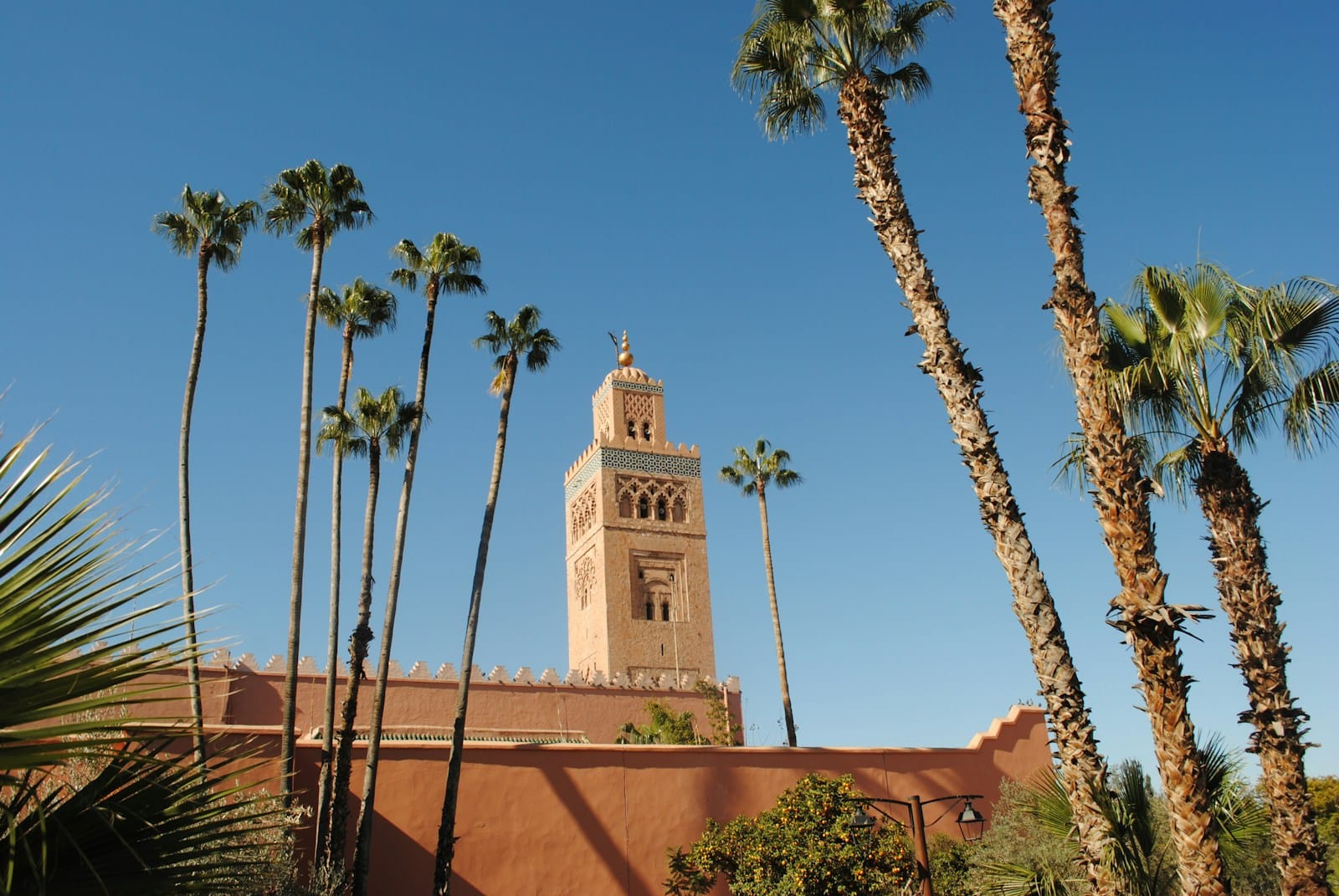
My journey exploring where and what to eat in Morocco left me with more than just a satisfied appetite – it gave me a deeper understanding of a culture where food is an expression of generosity, history, and artistry. From the communal breaking of bread to the patient preparation of slow-cooked tagines, Moroccan cuisine tells the story of its people.
If you’ve ever wondered where and what to eat in Morocco, the answer lies in every steaming tagine, every bustling souk, and every cup of sweet mint tea shared with a smile. The country’s cuisine invites you to slow down, savor each bite, and connect with both the food and the people who prepare it with such care.
As a Moroccan proverb says, “He who has not tasted what is bitter does not know what is sweet.” In the contrasts of flavors – sweet and savory, spiced and subtle – Morocco’s culinary traditions reflect the rich complexity of life itself. Bring an open mind, a hungry stomach, and a willingness to explore, and Morocco will reward you with some of the most memorable meals of your life.
─── Your questions, our answers.
Frequently Asked Questions
Our dedicated team is here to answer your Morocco Travel questions and ensure a smooth, memorable journey through Morocco.
What is the most famous dish in Morocco?
Tagine — the iconic slow-cooked stew that captures Moroccan flavor in every bite. Named after the distinctive conical clay pot it’s cooked in, tagine comes in countless variations, from lamb with prunes and almonds to chicken with preserved lemon and olives.
Where can I find the best Moroccan street food?
Marrakech’s Jemaa el-Fna, Fez’s old medina, and Essaouira’s harbor are top choices. Jemaa el-Fna transforms each evening into a massive open-air food court with numbered stalls serving everything from grilled meats to snail soup. In Fez, follow the locals to small stalls tucked within the medina’s 9,000+ alleyways.
Is Moroccan food spicy?
It’s aromatic and flavorful, but not overly hot — expect warm spices like cinnamon, cumin, and saffron rather than chili heat. Moroccan cuisine focuses on complex, layered flavors rather than spiciness. However, you’ll often find harissa (chili paste) available as a condiment if you prefer to add heat to your dish.
What foods should travelers avoid?
Avoid raw salads and unfiltered water, choose busy food stalls for freshness and safety. Be cautious with unpasteurized dairy products and pre-cut fruits that may have been washed in tap water. When in doubt about a street food vendor, look for places with high turnover and where locals are eating.
What drinks pair best with Moroccan meals?
Mint tea is a must; fresh juices and local coffee are also favorites. While Morocco is a predominantly Muslim country, alcohol is available in many restaurants and hotels. Moroccan wines, particularly from the Meknes region, pair well with local cuisine. For non-alcoholic options, try nous nous (half coffee, half milk) or fresh pomegranate juice when in season.

Kate Carter
Family Travel Blogger
Kate Carter is a mom and travel blogger who fell in love with Morocco’s culture and warmth. Through Morocco Family Vacation, she shares tips and stories to help travelers enjoy authentic, stress-free experiences. Join us along the way.
Table of Contents
Our Services
-
Private Family Tours
-
Custom Itineraries
-
Sahara Desert Tours
-
Chefchaouen & Northern Morocco Tours
-
Luxury Desert Camping
-
Multi-Day Tours (2–16 Days)
-
Atlas Mountains Trips
-
Cooking Classes & Market Visits
-
Photography & Heritage Tours
-
Airport Transfers & Private Transport
-
Custom Birdwatching Tour in Morocco
-
24/7 Tour Support & booking Flexibility

At Morocco Family Vacation, we create custom Morocco tour packages designed around your interests and travel style. As a dedicated and independent travel agency, we specialize in private Morocco tours offering memorable desert adventures, cultural experiences, and family friendly itineraries while delivering attentive, personalized service from start to finish.
Popular Tours
Latest Posts
#Moroccan Cuisine Guide
#Authentic Moroccan Dishes
#Moroccan Street Food
#Tagine Recipes
#Culinary Travel Morocco







